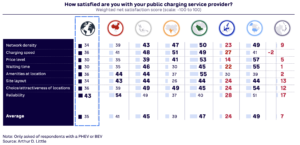The European Network of Transmission System Operators for Electricity (ENTSO-E) has emphasised the significant potential of Heavy-Duty Electric Vehicles (HDEV) in contributing to grid flexibility services. This potential is largely untapped, and its realization depends on the development and implementation of a robust framework.
According to ENTSO-E, buses and trucks generally follow more predictable routes and schedules compared to private cars. This predictability makes them ideal candidates for planned charging, which can be aligned with grid needs. The report highlights that depot charging during night or off-service hours could be used to provide grid services, such as demand response and load balancing. However, opportunity charging and highway charging during short intervals may offer limited flexibility.
The feasibility of utilizing HDEVs for grid services largely depends on the technical capabilities of the charging infrastructure and the vehicle’s Battery Management System. These systems must be capable of adjusting the charging load profile in response to grid signals. Consequently, the decision to engage in smart charging will depend on the driver, influenced by various objective and subjective factors.
ENTSO-E urges Transmission System Operators (TSOs) to delve into the real technical limits of demand response and load balancing, considering the rate of HDEV penetration. To facilitate the integration of HDEVs into flexibility services, a clear regulatory framework, coupled with incentives and attractive business models, is essential. These should include provisions for data exchange, digitalization for cross-sector integration, and allowing HDEVs to participate in electricity markets on par with other flexibility resources.
ENTSO-E calls for further research and demonstration projects to better understand HDEV charging patterns and the associated costs and opportunities for transport operators and Mobility Service Providers. Collaborative efforts between TSOs and fleet operators could be instrumental in this context. Pilot projects and regulatory sandboxes could provide valuable insights into grid impacts, responses to time-varying tariffs, and the actual flexibility potential of HDEVs.
This report underlines the evolving landscape of electric mobility and its interplay with the electricity grid. It opens up discussions for policymakers, industry stakeholders, and TSOs to consider HDEVs as a critical component in the transition towards a more flexible and sustainable energy system.
Source: Deployment of Heavy-Duty Electric Vehicles and their Impact on the Power System | ENTSO-E




